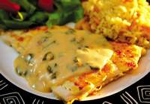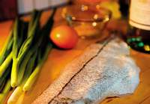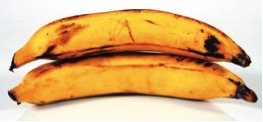First-class fish
For New England fishermen, haddock are unpredictable. “They’re flightily - they’re here, They’re gone. They’re back again,” says Hampton fisherman David Goethel.
Haddock lovers need not worry: The catch is coming up big this winter. Despite playing hard to get, large numbers of haddock are lurking among sea clams and clay-bottomed areas of the Atlantic.
“All of a sudden, you run into 2,000 of them,” Goethel says. This catch-me-if-you-can attitude seems fitting for such a great-tasting fish that tempts us even before it’s on our plates.
Haddock needs little introduction to New Englanders, but we easily forget what makes haddock distinctively haddock. It’s sloshed in batter so often - used interchangeably with cod and pollock for fish and chips and other seafood shanty classics - that its flavor is frequently deep-fried out of existence.
Yet haddock is the creme de la creme of white fish for many seafood chefs and fishermen.
“I’ll take it over cod or pollock any day,” says chef Chris Martin of Michael Timothy’s in Nashua, who adds that cod and pollock are substitutes for haddock, not the other way around.
From Martin’s mental Rolodex of haddock recipes - “I know a hundred of them,” he says - comes Mediterranean haddock with sun-dried tomato on fresh spinach; haddock with shallots, white wine, butter and tarragon; and another with walnut pesto. The one I make him back up to - Haddock Dijonese - turns out to be easy and scrumptious.
Haddock is comfort food for both the rugged and leisurely. For some it’s a holiday dish; others recall its availability during the Depression and wartime. In Alfred Hitchcock’s thriller “39 Steps,” home-cooked haddock provides a respite for the beautiful, brunette spy, Annabella Smith, before she’s dispatched with a kitchen knife. It was at least a good last meal against the backdrop of world unrest.
Russell Sherman’s haddock chowder is a pleasure that lightens the burden of being at sea.
“Fish stews were always the evening meal,” says Sherman, a Gloucester, Mass., fisherman who worked as a ship’s cook his first three years at sea.
Others close to the source favor simple enhancements.
Hank Soule, general manager of the Portland (Maine) Fish Exchange, says “a light touch” is key. Haddock’s mild taste makes it an ideal canvas for bringing forth the essence of fresh herbs and spices.
“It takes on the flavor of whatever you put on it,” says David Daume, sous chef at The Mile Away Restaurant in Milford.
“Haddock is naturally sweet, so at least to start, keep it away from heavy sauces or seasonings,” Soule adds. This leaves room for my sister’s jalapeno-hot cornbread. It has earned the title of “cornbread with attitude” in my house and complements haddock very well.
In his cookbook memoir, “Reflections and Recipes from an Old Salt,” Roger Fitzgerald recounts eating so much haddock as a New England fisherman that he began developing a lateral stripe down his side. It’s this black stripe that distinguishes haddock from cod in appearance. Haddock is the only fish routinely displayed skin-side up at the seafood counter for this reason.
Haddock prices are going down as the supply goes up. Soule says 2004’s haddock landings were up by 25 percent over 2003. He expects a greater jump this year.
“We think that in terms of freshness, steady availability and especially price, haddock will be one of the best seafood values for consumers over the next five years,” Soule says.
Even with the stocks replenished, cooking haddock is more dependable than catching it.
“It’s what you run into,” says Sherman, who never sets out to catch the capricious fish. Still, it’s a “success story. One we’ve been waiting for,” he says.
As for Fitzgerald, now retired in Duvall, Wash., where he fishes in his back yard: “If I had to think of one good reason to move back to New England, it would be haddock.”
HADDOCK DIJONESE
2 tablespoons olive oil
1 egg
1 tablespoon water
2 6-ounce haddock skinned fillets
1 cup flour
Salt and pepper
4 ounces of 2 percent milk (see note)
1 teaspoon of cornstarch
2 ounces of dry vermouth or other white wine
1 tablespoon of Dijon mustard
2 scallions finely chopped
Heat oil in frying pan on medium heat.
Whip together egg with 1 tablespoon of water in large bowl to create wash.
Dust haddock fillets in flour that’s been lightly seasoned with salt and pepper. Drop fillets in egg wash.
Sear fillets on medium heat for 4 minutes; turn fillets over and cook for another 3 minutes.
Meanwhile, mix milk and cornstarch, and set aside.
Remove haddock to serving plate.
In the same frying pan, add vermouth, mustard, scallions and milk (slowly) that’s been mixed with cornstarch.
Note: For added richness, substitute 4 ounces of heavy cream for the milk and cornstarch.
Serves 2.



